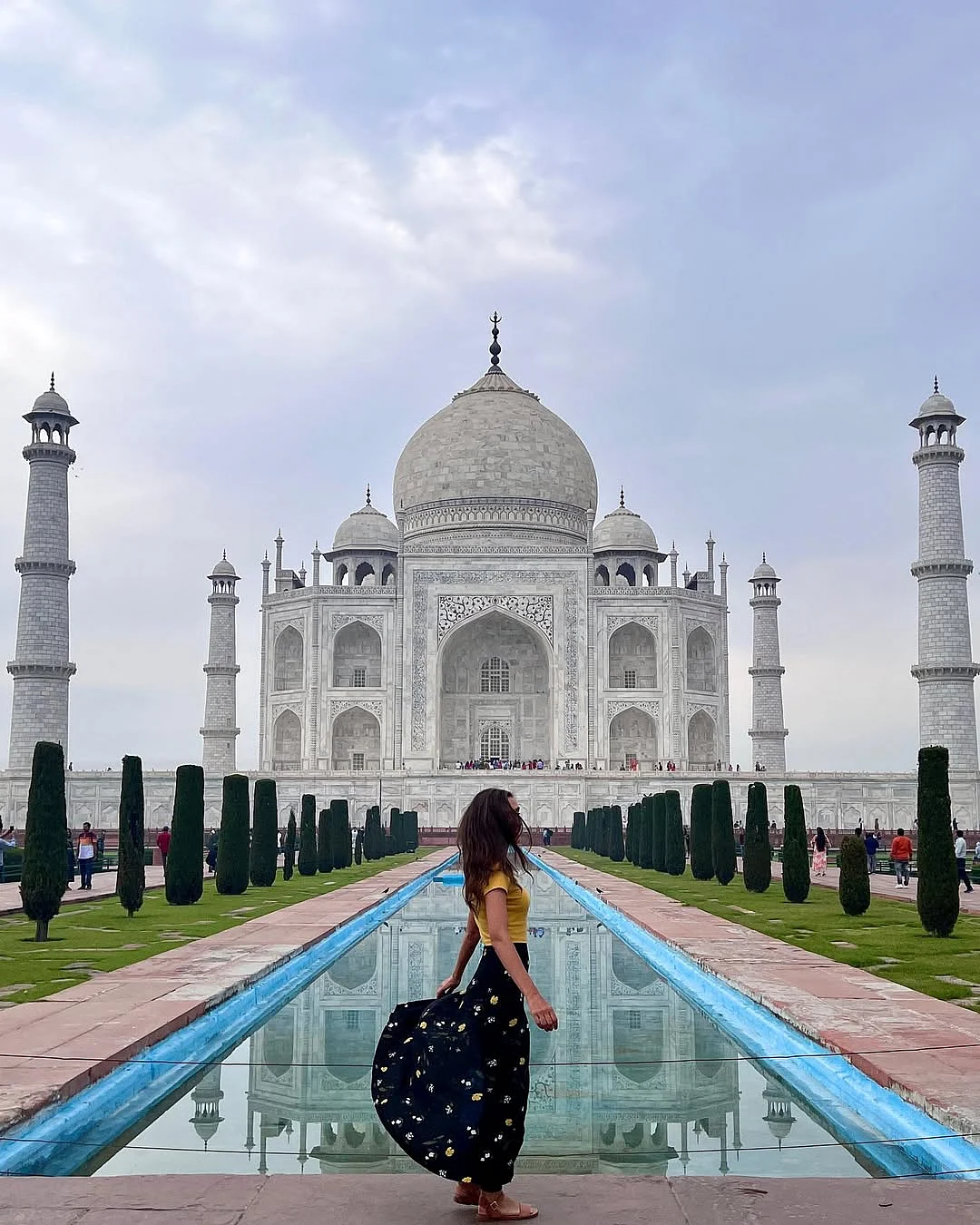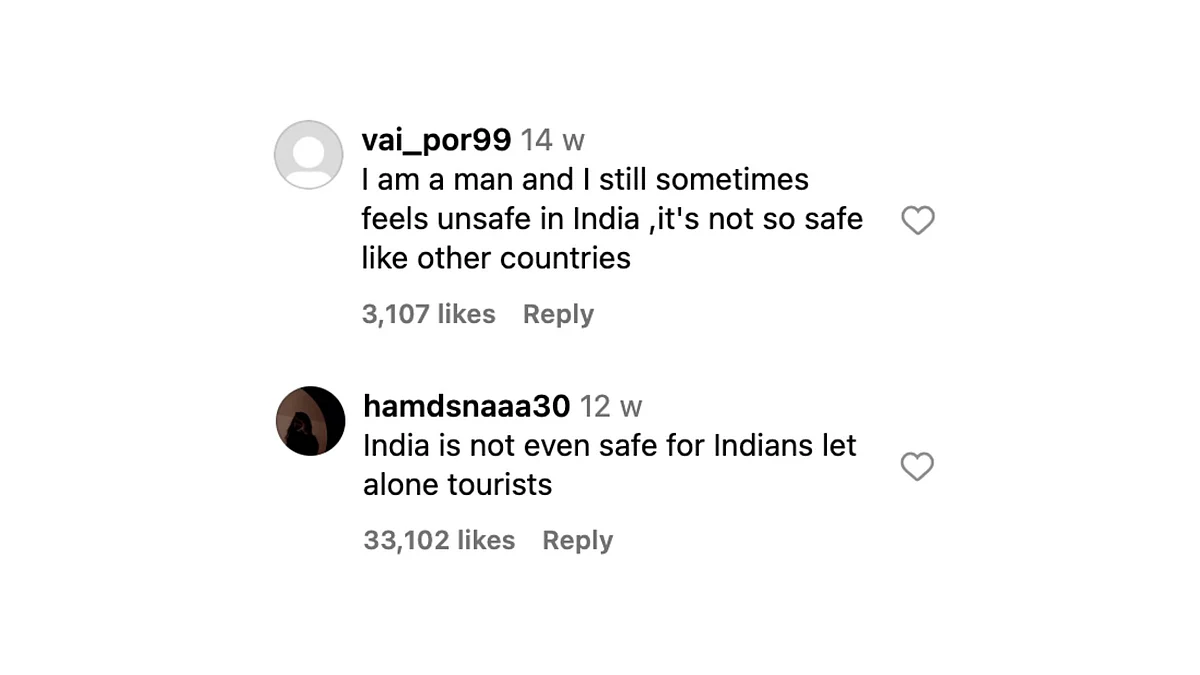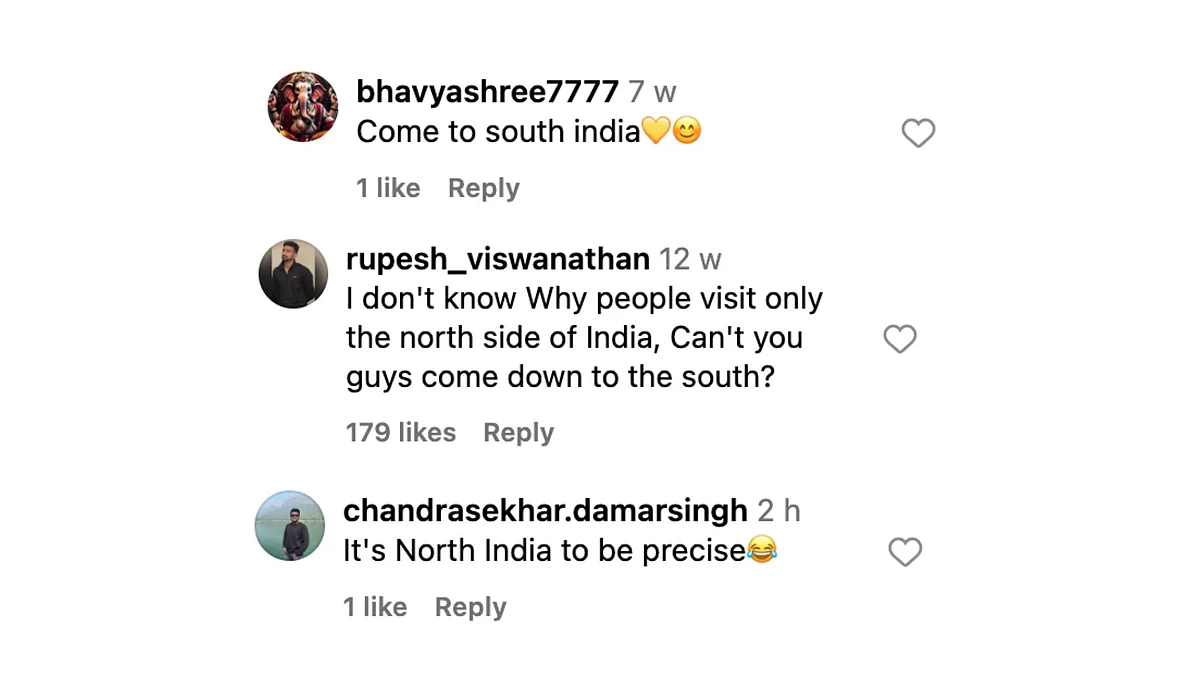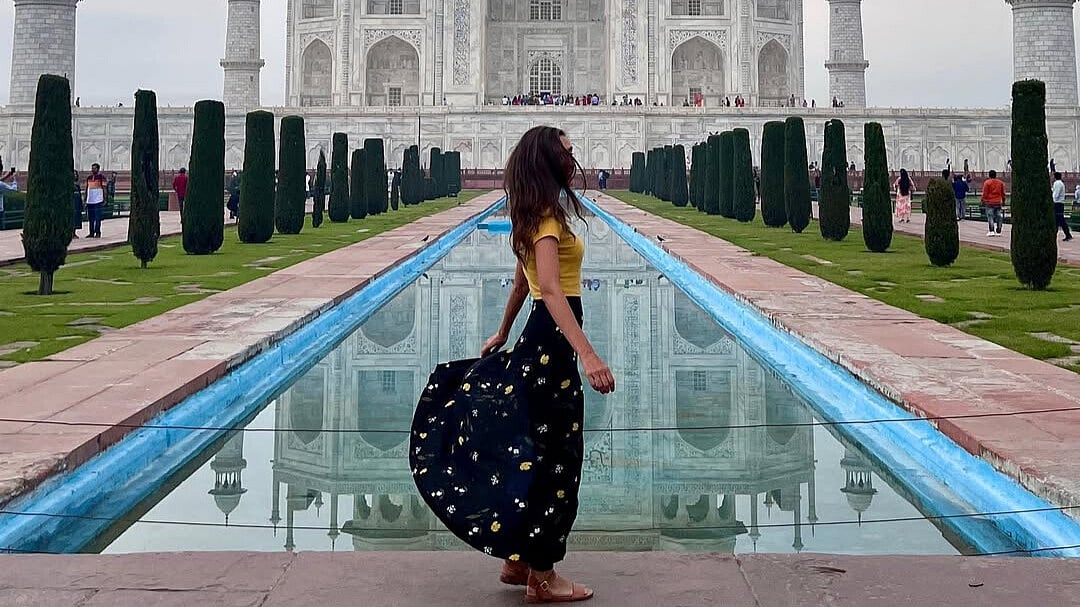It's no secret that India's safety is a topic of controversy; ever-changing based on the people you speak with and areas of the country you visit.
As for solo traveller Sarah Woodard, her experience in North India seems congruous with the idea that the country is lacking in security, in giving her discomfort-filled trip.
A reel on her Instagram page titled, “Countries I Felt Unsafe in as a Solo Female Traveller,” ranks five countries, of which India is a contender.
The content creator explained that she "always felt like someone was watching (her)" during her trip to the North. "I would even get called back to the car because the driver didn’t like the way people were looking at me," she said.
The conversation didn’t stop with her testimony; the comment section, humourously, had much more to add.

The trio of comments refer to a clip in the reel where Woodard is walking with the Taj Mahal in the background and a local man whips around, evidently staring at her, while she focuses on her vlog.
This surfaces the common phenomenon of people staring at you in India; a practice frequently experienced by foreigners. As much as citizens would like to ignore this reality, the "0.25 second clip" stands as evidence.

Image courtesy: Sarah Woodard/Instagram
The country's safety situation appears to have reached a point where such cases of interpersonal encounters are no longer out-of-the-blue. Instead, they are expected; and Woodard’s comment section awards it like a medal of honour.
Some comments offer sympathy from a space of relatability, as Indian citizens share their experiences of a lack of safety in their own city.
Exercising their sarcasm with the harsh metaphor of comparing India to a “toilet,” social media users’ comments reflect concern, not only for women, but also for often-neglected groups like men and animals. Many comments welcomed the digital creator to Pakistan and Bangladesh, promising her a safer experience.

Other women related to the digital creator’s experience, recommending the addition of “karate or kunfu [kung fu]” to one’s list of top skills to battle the lack of safety.
While viewers were agreeing with Woodard’s experience, there were several who claimed that, like many other countries across the world, it depends on the places you go to — because some are always less safe than others.
Despite being rich in heritage and architecture, India is also home to a lack of hygiene, aggression among people, petty crime or theft and a lack of general safety, more heavily concentrated in the North (compared to the South).

However, there were some comments that supported the idea of complete safety being an issue anywhere in the world; rather, it depends on the area you go to. In other words, if some places deemed safe have their risky areas.
Underneath all the humour of social media, what does this say about the country?
There is no black-and-white answer to India’s safety. There are, unfortunately, several factors involved: including the area you visit, the way you dress, the time of the day and the density of the crowd. Despite some parts of the country trying to pave a path of progress and marching into the future, it still comes from conservative roots, which are still traditionally practiced in certain parts of India.
The question is this: Is the lack of safety in a city, state or country mutually exclusive with the cultural experiences (e.g. food, fashion, architecture and tourist attractions) it has to offer?
Though the journey might not be a smooth sail, it’s always a story. Why not take a chance on someplace new?








